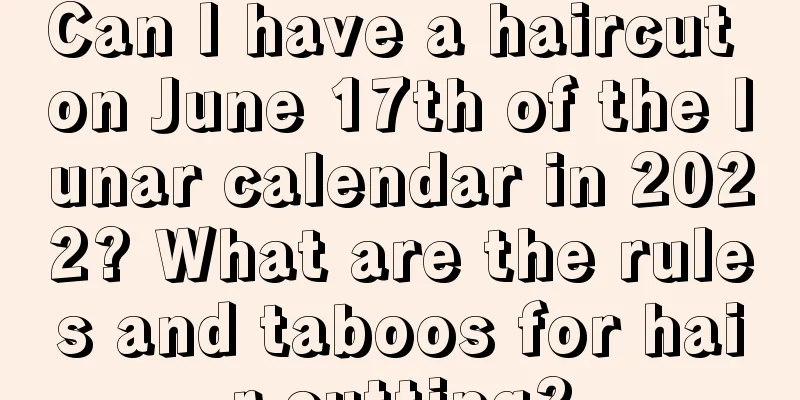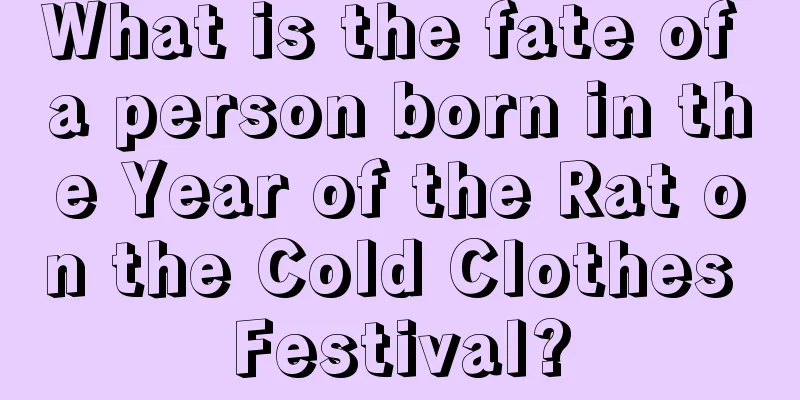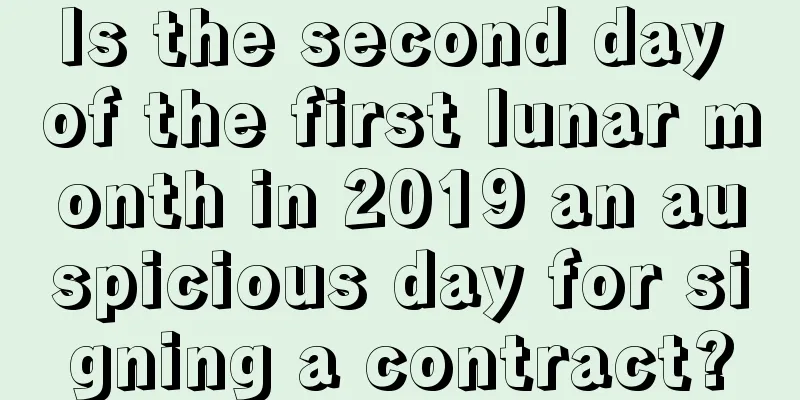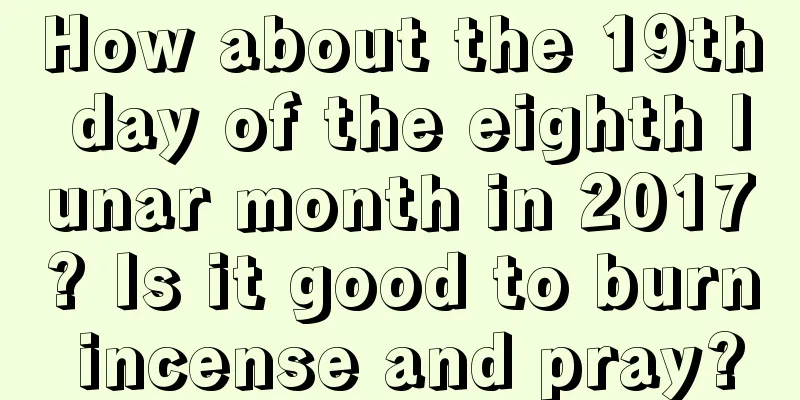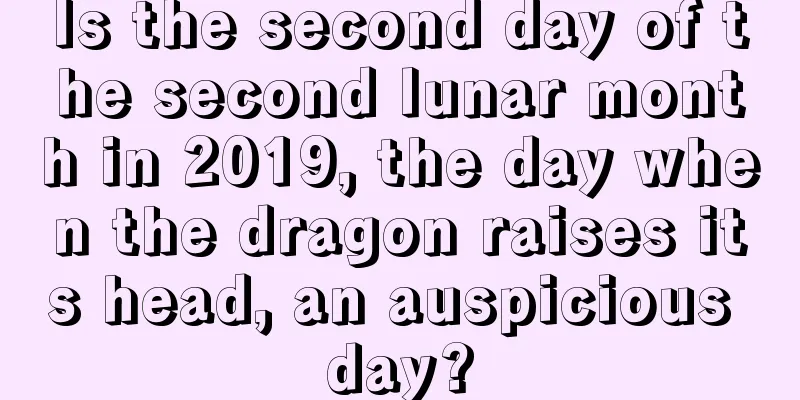When is the Mid-Autumn Festival in 2017? What are the traditional customs of Mid-Autumn Festival?

Introduction: The Mid-Autumn Festival is here in the blink of an eye, and our country is a traditional country, so it has many traditional customs. So when is the Mid-Autumn Festival in 2017? What are the traditional customs of Mid-Autumn Festival? The Mid-Autumn Festival is a traditional festival and one of the festive days for family reunion. The Fortune Teller website has planned special content about the Mid-Autumn Festival for everyone. Let’s experience it together!When is the Mid-Autumn Festival in 2017?The 2017 Mid-Autumn Festival is on October 4, 2017, the 15th day of the eighth month (big month) of the lunar calendar, 2017, which is a Wednesday. The zodiac sign of the Chinese zodiac is Wuwu, and the evil star is South. The Mid-Autumn Festival, also known as Moon Festival, Autumn Festival, Mid-Autumn Festival, August Festival, August Meeting, Moon-Chasing Festival, Moon-Playing Festival, Moon-Worshiping Festival, Daughter's Festival or Reunion Festival, is a traditional cultural festival popular among many ethnic groups in China and countries in the Chinese character cultural circle. It falls on the 15th day of the eighth month in the lunar calendar. It is named so because it falls exactly in the middle of the three autumns. In some places, the Mid-Autumn Festival is set on August 16. The Mid-Autumn Festival began in the early Tang Dynasty, was popular in the Song Dynasty, and by the Ming and Qing Dynasties, it had become one of China's traditional festivals as famous as the Spring Festival. Influenced by Chinese culture, Mid-Autumn Festival is also a traditional festival in some countries in East Asia and Southeast Asia, especially for local Chinese and overseas Chinese. Since 2008, Mid-Autumn Festival has been listed as a national statutory holiday. On May 20, 2006, the State Council included it in the first batch of national intangible cultural heritage list.What are the traditional customs of Mid-Autumn Festival?1. Offering sacrifices to the moon, appreciating the moon, and worshipping the moon . The "Book of Rites" had long recorded "Autumn Evening Moon", which means worshipping the moon god. At this time, people would hold festivals to welcome the cold and offer sacrifices to the moon, and set up incense tables. In the Zhou Dynasty, the Mid-Autumn Festival was celebrated every year with the welcoming of the cold and the worship of the moon. A large incense table is set up, and offerings such as moon cakes, watermelons, apples, red dates, plums, grapes, etc. are placed on it. Moon cakes and watermelons are absolutely indispensable, and the watermelon must be cut into a lotus shape. The custom of appreciating the moon on Mid-Autumn Festival was very popular in the Tang Dynasty, and many famous poems by poets contain verses about the moon. By the Song Dynasty, the custom of appreciating the moon on Mid-Autumn Festival became more popular. On this day, "the rich families decorated their pavilions and terraces, while the common people vied to occupy restaurants to enjoy the moon." During the Ming and Qing dynasties, moon-worship and moon-appreciation activities among the court and the public were even more large-scale, and many ancient monuments such as "Moon-Worship Altars", "Moon-Worship Pavilions" and "Moon-Viewing Towers" still remain throughout China. 2. Watching the tide In ancient times, in addition to moon-watching during the Mid-Autumn Festival, watching the tide was another major Mid-Autumn Festival event in Zhejiang. The custom of watching the tide during the Mid-Autumn Festival has a long history. As early as the Han Dynasty, there was a very detailed description of it in Mei Cheng's "Seven Hairs". After the Han Dynasty, the custom of watching the tide during the Mid-Autumn Festival became more popular. There are also records of watching the tide in Zhu Tinghuan's "Supplement to Wulin Old Stories" in the Ming Dynasty and Wu Zimu's "Dreams of the Southern Song Dynasty" in the Song Dynasty. Nowadays, the Qiantang River tide attracts a large number of tourists every year to experience the thrill of life and death. 3. Light lanterns On the night of the Mid-Autumn Festival, there is a custom of lighting lanterns to enhance the moonlight. Nowadays, people in the Huguang area still have the custom of stacking tiles into a tower and lighting lanterns on the tower. In the Jiangnan area, there is a festival custom of making lantern boats. In modern times, the custom of lighting lanterns during the Mid-Autumn Festival has become more popular. 4. Guessing riddles: On the full moon night of the Mid-Autumn Festival, many lanterns are hung in public places. People gather together to guess the riddles written on the lanterns. As it is a favorite activity for most young men and women, and love stories are also spread during these activities, guessing riddles during the Mid-Autumn Festival has also evolved into a form of love between men and women. 5. Eating mooncakes . Moon-watching and moon-eating are essential customs for celebrating the Mid-Autumn Festival in all parts of China. As the saying goes, "The moon is full on the 15th day of August, and the Mid-Autumn mooncakes are fragrant and sweet." There is also a custom of Bo Bian in Xiamen, Fujian, and Bo Bian has been listed as a national intangible cultural heritage project. 6. Appreciating osmanthus flowers and drinking osmanthus wine People often eat moon cakes and appreciate osmanthus flowers during the Mid-Autumn Festival, and eat various foods made with osmanthus, with pastries and candies being the most common. 7. Playing with Lanterns There is no large-scale lantern festival during the Mid-Autumn Festival like the Lantern Festival. Playing with lanterns is mainly done among families and children. As early as in the Northern Song Dynasty's "Wulin Jiushi", there was a record of the Mid-Autumn Festival customs, which included putting a "little red" lantern into the river to drift and play. Playing with lanterns during the Mid-Autumn Festival is mostly concentrated in the south. For example, at the Foshan Autumn Color Fair, there are all kinds of colorful lanterns: sesame lanterns, eggshell lanterns, wood shavings lanterns, straw lanterns, fish scale lanterns, husk lanterns, melon seed lanterns, as well as bird, animal, flower and tree lanterns. 8. Burning the Tower: The game of burning tile lamps (also known as burning flower towers, burning tile towers, and burning foreign towers) is widely spread in the south. According to folklore, the tower was built to commemorate the heroic battle of Liu Yongfu, a famous anti-French general in the Qing Dynasty, who burned to death the French invaders who fled into the tower. There is also a "burning tower" activity in Jinjiang, Fujian. Legend has it that this custom is related to the heroic act of resisting the Yuan soldiers. After the establishment of the Yuan Dynasty, the Han people were ruled bloodily, so the Han people launched an unyielding resistance. Various places agreed to start an uprising on the Mid-Autumn Festival and lit a fire on the top floor of the pagoda as a signal. Similar to the uprising of setting fire to Fenghuotai, although this resistance was suppressed, the custom of burning pagodas remained.Summary: Through the above article, we know about [What day is the Mid-Autumn Festival in 2017? What are the traditional customs of Mid-Autumn Festival? 】I hope this analysis of the problem can help everyone! |
Recommend
Is it not suitable to open a business on August 22, 2020?
Introduction: It is necessary to choose an auspici...
Is it a good idea to hold the funeral on December 19th of the lunar calendar in 2018?
With the continuous development of society, there ...
Is the 19th day of the first lunar month in 2017 an auspicious day? Is it suitable for engagement?
Introduction: Marriage is a major event in life, a...
Is it necessary to drink Guyu tea during the Guyu solar term? How should we offer sacrifices to the sea during the Guyu solar term?
Introduction: Guyu is one of the 24 solar terms, a...
Can I move house on the beginning of winter in 2018? What should I pay attention to when moving house on the beginning of winter in 2018?
Introduction: You also need to choose an auspiciou...
Is the tea before or after Grain Rain better? What should you pay attention to when drinking Guyu tea?
It is a custom to drink Guyu tea during the Guyu s...
What are the do's and don'ts on the ninth day of the seventh lunar month in 2017?
What day is the ninth day of the seventh lunar mo...
Is it appropriate to enter home during the Beginning of Winter in 2017? What are the requirements for moving?
The Beginning of Winter is a traditional solar ter...
Interpretation of Feng Shui for the bedroom in the house—auspicious layout and taboos for the bedroom in 2020!
The bedroom is where we rest, so it should be quie...
When is the big snow in 2017? What are the food customs during the big snow season?
Introduction: Our country has a splendid food cult...
2020 Lunar February 5th birth year children's horoscope query horoscope energy
Constellations are a symbol and representation of ...
What are the do's and don'ts on the 15th day of the sixth lunar month in 2017?
The arrival of the leap month of June in the luna...
Will the Pig have good luck in love during the National Day 2017? Can I meet my soulmate?
Introduction: There are usually gatherings during ...
How is the 27th day of the ninth lunar month in 2021? Can I move house today?
Moving at different times will have different bene...
Is it possible to offer sacrifices on the seventh day of the fourth lunar month in 2018?
Sacrifice is an important part of our country'...



